Fifty of the world’s greatest writers share their views in collaboration with the artist Matteo Pericoli, expanding our own views on place, creativity, and the meaning of home
All of us, at some point in our daily lives, have found ourselves looking out the window. We pause in our work, tune out of a conversation, and turn toward the outside. Our eyes simply gaze, without seeing, at a landscape whose familiarity becomes the customary ground for distraction: the usual rooftops, the familiar trees, a distant crane. The way of life for most of us in the twenty-first century means that we spend most of our time indoors, in an urban environment, and our awareness of the outside world comes via, and thanks to, a framed glass hole in the wall.
In Windows on the World: Fifty Writers, Fifty Views, architect and artist Matteo Pericoli brilliantly explores this concept alongside fifty of our most beloved writers from across the globe. By pairing drawings of window views with texts that reveal—either physically or metaphorically—what the drawings cannot, Windows on the World offers a perceptual journey through the world as seen through the windows of prominent writers: Orhan Pamuk in Istanbul, Daniel Kehlmann in Berlin, Chimamanda Ngozi Adichie in Lagos, John Jeremiah Sullivan in Wilmington, North Carolina, Nadine Gordimer in Johannesburg, Xi Chuan in Beijing. Taken together, the views—geography and perspective, location and voice—resonate with and play off each other.
Working from a series of meticulous photographs and other notes from authors’ homes and offices, Pericoli creates a pen-and-ink illustration of each window and the view it frames. Many readers know Pericoli’s work from his acclaimed series for The New York Times and later for The Paris Review Daily, which have a devoted following. Now, Windows on the World collects from Pericoli’s body of work and features fifteen never-before-seen windows in one gorgeously designed volume, as well as a preface from the Paris Review’s editor Lorin Stein. As we delve into what each writer’s view may or may not share with the others’, as we look at the map and explore unfamiliar views of cities from around the world, a new kind of map begins to take shape.
Windows on the World is a profound and eye-opening look inside the worlds of writers, reminding us that the things we see every day are woven into our selves and our imaginations, making us keener and more inquisitive observers of our own worlds.
All of us, at some point in our daily lives, have found ourselves looking out the window. We pause in our work, tune out of a conversation, and turn toward the outside. Our eyes simply gaze, without seeing, at a landscape whose familiarity becomes the customary ground for distraction: the usual rooftops, the familiar trees, a distant crane. The way of life for most of us in the twenty-first century means that we spend most of our time indoors, in an urban environment, and our awareness of the outside world comes via, and thanks to, a framed glass hole in the wall.
In Windows on the World: Fifty Writers, Fifty Views, architect and artist Matteo Pericoli brilliantly explores this concept alongside fifty of our most beloved writers from across the globe. By pairing drawings of window views with texts that reveal—either physically or metaphorically—what the drawings cannot, Windows on the World offers a perceptual journey through the world as seen through the windows of prominent writers: Orhan Pamuk in Istanbul, Daniel Kehlmann in Berlin, Chimamanda Ngozi Adichie in Lagos, John Jeremiah Sullivan in Wilmington, North Carolina, Nadine Gordimer in Johannesburg, Xi Chuan in Beijing. Taken together, the views—geography and perspective, location and voice—resonate with and play off each other.
Working from a series of meticulous photographs and other notes from authors’ homes and offices, Pericoli creates a pen-and-ink illustration of each window and the view it frames. Many readers know Pericoli’s work from his acclaimed series for The New York Times and later for The Paris Review Daily, which have a devoted following. Now, Windows on the World collects from Pericoli’s body of work and features fifteen never-before-seen windows in one gorgeously designed volume, as well as a preface from the Paris Review’s editor Lorin Stein. As we delve into what each writer’s view may or may not share with the others’, as we look at the map and explore unfamiliar views of cities from around the world, a new kind of map begins to take shape.
Windows on the World is a profound and eye-opening look inside the worlds of writers, reminding us that the things we see every day are woven into our selves and our imaginations, making us keener and more inquisitive observers of our own worlds.
Maps are objects of endless fascination, and the urge to map is a basic human instinct. In this masterful study, historian and cartography expert Jerry Brotton reveals how maps—far from being objective documents—are intimately tied to the views and agendas of particular times and places. Beginning with Ptolemy’s Geography and ending with the satellite-powered behemoth of Google Earth, Brotton examines a dozen world maps from around the globe and through the centuries to trace the long road to our present geographical reality.
This is the kind of book map lovers and history buffs adore. Beautifully illustrated and brilliantly original, A History of the World in 12 Maps was a hit in the U.K. and certain to work its cartographic magic on American audiences.
This is the kind of book map lovers and history buffs adore. Beautifully illustrated and brilliantly original, A History of the World in 12 Maps was a hit in the U.K. and certain to work its cartographic magic on American audiences.
The Atlas of Remote Islands, Judith Schalansky’s beautiful and deeply personal account of the islands that have held a place in her heart throughout her lifelong love of cartography, has captured the imaginations of readers everywhere. Using historic events and scientific reports as a springboard, she creates a story around each island: fantastical, inscrutable stories, mixtures of fact and imagination that produce worlds for the reader to explore.
Gorgeously illustrated and with new, vibrant colors for the Pocket edition, the atlas shows all fifty islands on the same scale, in order of the oceans they are found. Schalansky lures us to fifty remote destinations—from Tristan da Cunha to Clipperton Atoll, from Christmas Island to Easter Island—and proves that the most adventurous journeys still take place in the mind, with one finger pointing at a map.
Gorgeously illustrated and with new, vibrant colors for the Pocket edition, the atlas shows all fifty islands on the same scale, in order of the oceans they are found. Schalansky lures us to fifty remote destinations—from Tristan da Cunha to Clipperton Atoll, from Christmas Island to Easter Island—and proves that the most adventurous journeys still take place in the mind, with one finger pointing at a map.
From London’s inimitable mayor, Boris Johnson, the story of how Churchill’s eccentric genius shaped not only his world but our own.
On the fiftieth anniversary of Churchill’s death, Boris Johnson celebrates the singular brilliance of one of the most important leaders of the twentieth century. Taking on the myths and misconceptions along with the outsized reality, he portrays—with characteristic wit and passion—a man of contagious bravery, breathtaking eloquence, matchless strategizing, and deep humanity.
Fearless on the battlefield, Churchill had to be ordered by the king to stay out of action on D-Day; he pioneered aerial bombing and few could match his experience in organizing violence on a colossal scale, yet he hated war and scorned politicians who had not experienced its horrors. He was the most famous journalist of his time and perhaps the greatest orator of all time, despite a lisp and chronic depression he kept at bay by painting. His maneuvering positioned America for entry into World War II, even as it ushered in England’s post-war decline. His openmindedness made him a trailblazer in health care, education, and social welfare, though he remained incorrigibly politically incorrect. Most of all, he was a rebuttal to the idea that history is the story of vast and impersonal forces; he is proof that one person—intrepid, ingenious, determined—can make all the difference.
On the fiftieth anniversary of Churchill’s death, Boris Johnson celebrates the singular brilliance of one of the most important leaders of the twentieth century. Taking on the myths and misconceptions along with the outsized reality, he portrays—with characteristic wit and passion—a man of contagious bravery, breathtaking eloquence, matchless strategizing, and deep humanity.
Fearless on the battlefield, Churchill had to be ordered by the king to stay out of action on D-Day; he pioneered aerial bombing and few could match his experience in organizing violence on a colossal scale, yet he hated war and scorned politicians who had not experienced its horrors. He was the most famous journalist of his time and perhaps the greatest orator of all time, despite a lisp and chronic depression he kept at bay by painting. His maneuvering positioned America for entry into World War II, even as it ushered in England’s post-war decline. His openmindedness made him a trailblazer in health care, education, and social welfare, though he remained incorrigibly politically incorrect. Most of all, he was a rebuttal to the idea that history is the story of vast and impersonal forces; he is proof that one person—intrepid, ingenious, determined—can make all the difference.
A searing and highly original analysis of the First World War and its anguished aftermath
In the depths of the Great War, with millions dead and no imaginable end to the conflict, societies around the world began to buckle. The heart of the financial system shifted from London to New York. The infinite demands for men and matériel reached into countries far from the front. The strain of the war ravaged all economic and political assumptions, bringing unheard-of changes in the social and industrial order.
A century after the outbreak of fighting, Adam Tooze revisits this seismic moment in history, challenging the existing narrative of the war, its peace, and its aftereffects. From the day the United States enters the war in 1917 to the precipice of global financial ruin, Tooze delineates the world remade by American economic and military power.
In the depths of the Great War, with millions dead and no imaginable end to the conflict, societies around the world began to buckle. The heart of the financial system shifted from London to New York. The infinite demands for men and matériel reached into countries far from the front. The strain of the war ravaged all economic and political assumptions, bringing unheard-of changes in the social and industrial order.
A century after the outbreak of fighting, Adam Tooze revisits this seismic moment in history, challenging the existing narrative of the war, its peace, and its aftereffects. From the day the United States enters the war in 1917 to the precipice of global financial ruin, Tooze delineates the world remade by American economic and military power.
Tracing the ways in which countries came to terms with America’s centrality—including the slide into fascism—The Deluge is a chilling work of great originality that will fundamentally change how we view the legacy of World War I.
For the magazine’s centenary celebration, an anthology of pieces from the early golden age of Vanity Fair
In honor of the 100th anniversary of Vanity Fair magazine, Bohemians, Bootleggers, Flappers, and Swells celebrates the publication’s astonishing early catalogue of writers, with works by Dorothy Parker, Noël Coward, P. G. Wodehouse, Jean Cocteau, Colette, Gertrude Stein, Edna St. Vincent Millay, Sherwood Anderson, Robert Benchley, Langston Hughes—and many others. Vanity Fair editor Graydon Carter introduces these fabulous pieces written between 1913 and 1936, when the magazine published a murderers’ row of the world’s leading literary lights.
In honor of the 100th anniversary of Vanity Fair magazine, Bohemians, Bootleggers, Flappers, and Swells celebrates the publication’s astonishing early catalogue of writers, with works by Dorothy Parker, Noël Coward, P. G. Wodehouse, Jean Cocteau, Colette, Gertrude Stein, Edna St. Vincent Millay, Sherwood Anderson, Robert Benchley, Langston Hughes—and many others. Vanity Fair editor Graydon Carter introduces these fabulous pieces written between 1913 and 1936, when the magazine published a murderers’ row of the world’s leading literary lights.
Bohemians, Bootleggers, Flappers, and Swells features great writers on great topics, including F. Scott Fitzgerald on what a magazine should be, Clarence Darrow on equality, D. H. Lawrence on women, e.e. cummings on Calvin Coolidge, John Maynard Keynes on the collapse in money value, Thomas Mann on how films move the human heart, Alexander Woollcott on Harpo Marx, Carl Sandburg on Charlie Chaplin, Djuna Barnes on James Joyce, Douglas Fairbanks, Jr., on Joan Crawford, and Dorothy Parker on a host of topics ranging from why she hates actresses to why she hasn’t married.
These essays reflect the rich period of their creation while simultaneously addressing topics that would be recognizable in the magazine today, such as how women should navigate work and home life; our destructive fascination with the entertainment industry and with professional sports; the collapse of public faith in the financial industry; and, as Aldous Huxley asks herein, “What, Exactly, Is Modern?”
Offering readers an inebriating swig from that great cocktail shaker of the Roaring Twenties, the Jazz Age, the age of Gatsby, Bohemians, Bootleggers, Flappers, and Swells showcases unforgettable writers in search of how to live well in a changing era.
Offering readers an inebriating swig from that great cocktail shaker of the Roaring Twenties, the Jazz Age, the age of Gatsby, Bohemians, Bootleggers, Flappers, and Swells showcases unforgettable writers in search of how to live well in a changing era.
From an acclaimed African writer, a novel about family, freedom, and loyalty.
When Bella learns of the murder of her beloved half brother by political extremists in Mogadiscio, she’s in Rome. The two had different fathers but shared a Somali mother, from whom Bella’s inherited her freewheeling ways. An internationally known fashion photographer, dazzling but aloof, she comes and goes as she pleases, juggling three lovers. But with her teenage niece and nephew effectively orphaned – their mother abandoned them years ago—she feels an unfamiliar surge of protective feeling. Putting her life on hold, she journeys to Nairobi, where the two are in boarding school, uncertain whether she can—or must—come to their rescue. When their mother resurfaces, reasserting her maternal rights and bringing with her a gale of chaos and confusion that mirror the deepening political instability in the region, Bella has to decide how far she will go to obey the call of sisterly responsibility.
A new departure in theme and setting for “the most important African novelist to emerge in the past twenty-five years” (The New York Review of Books) Hiding in Plain Sight, is a profound exploration of the tensions between freedom and obligation, the ways gender and sexual preference define us, and the unexpected paths by which the political disrupts the personal.
When Bella learns of the murder of her beloved half brother by political extremists in Mogadiscio, she’s in Rome. The two had different fathers but shared a Somali mother, from whom Bella’s inherited her freewheeling ways. An internationally known fashion photographer, dazzling but aloof, she comes and goes as she pleases, juggling three lovers. But with her teenage niece and nephew effectively orphaned – their mother abandoned them years ago—she feels an unfamiliar surge of protective feeling. Putting her life on hold, she journeys to Nairobi, where the two are in boarding school, uncertain whether she can—or must—come to their rescue. When their mother resurfaces, reasserting her maternal rights and bringing with her a gale of chaos and confusion that mirror the deepening political instability in the region, Bella has to decide how far she will go to obey the call of sisterly responsibility.
A new departure in theme and setting for “the most important African novelist to emerge in the past twenty-five years” (The New York Review of Books) Hiding in Plain Sight, is a profound exploration of the tensions between freedom and obligation, the ways gender and sexual preference define us, and the unexpected paths by which the political disrupts the personal.
A New York Times bestselling and widely admired Catholic writer explores how we can retrieve transcendent faith in modern times
Critically acclaimed and bestselling author James Carroll has explored every aspect of Christianity, faith, and Jesus Christ except this central one: What can we believe about—and how can we believe in—Jesus in the twenty-first century in light of the Holocaust and other atrocities of the twentieth century and the drift from religion that
followed?
What Carroll has discovered through decades of writing and lecturing is that he is far from alone in clinging to a received memory of Jesus that separates him from his crucial identity as a Jew, and therefore as a human. Yet if Jesus was not taken as divine, he would be of no interest to us. What can that mean now? Paradoxically, the key is his permanent Jewishness. No Christian himself, Jesus actually transcends Christianity.
Drawing on both a wide range of scholarship as well as his own acute searching as a believer, Carroll takes a fresh look at the most familiar narratives of all: Matthew, Mark, Luke, and John. Far from another book about the “historical Jesus,” he takes the challenges of science and contemporary philosophy seriously. He retrieves the power of Jesus’ profound ordinariness, as an answer to his own last question—what is the future of Jesus Christ?—as the key to a renewal of faith.
Critically acclaimed and bestselling author James Carroll has explored every aspect of Christianity, faith, and Jesus Christ except this central one: What can we believe about—and how can we believe in—Jesus in the twenty-first century in light of the Holocaust and other atrocities of the twentieth century and the drift from religion that
followed?
What Carroll has discovered through decades of writing and lecturing is that he is far from alone in clinging to a received memory of Jesus that separates him from his crucial identity as a Jew, and therefore as a human. Yet if Jesus was not taken as divine, he would be of no interest to us. What can that mean now? Paradoxically, the key is his permanent Jewishness. No Christian himself, Jesus actually transcends Christianity.
Drawing on both a wide range of scholarship as well as his own acute searching as a believer, Carroll takes a fresh look at the most familiar narratives of all: Matthew, Mark, Luke, and John. Far from another book about the “historical Jesus,” he takes the challenges of science and contemporary philosophy seriously. He retrieves the power of Jesus’ profound ordinariness, as an answer to his own last question—what is the future of Jesus Christ?—as the key to a renewal of faith.
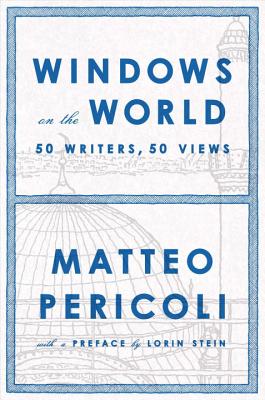
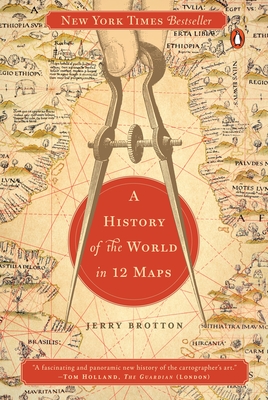
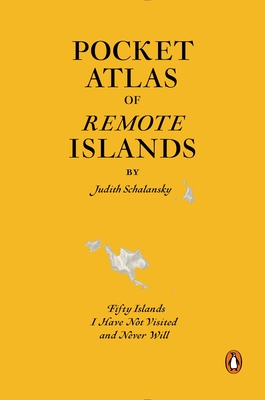

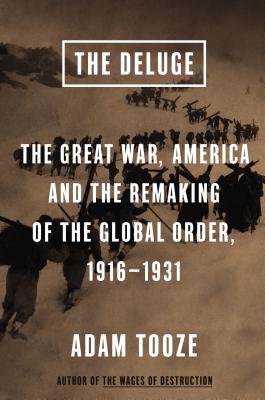
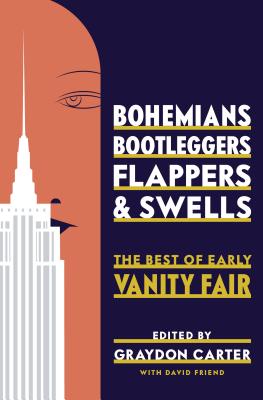
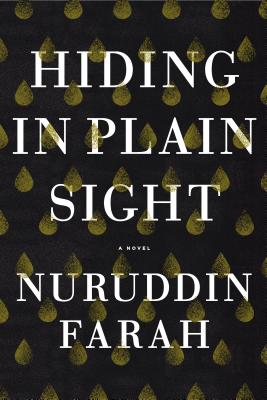

1 comment:
Using EasyHits4U you can earn free advertising credits by visiting other website-ads from a membership base of over 1,200,000 accounts. Earn advertising credits fast with a 1:1 exchange ratio.
Post a Comment